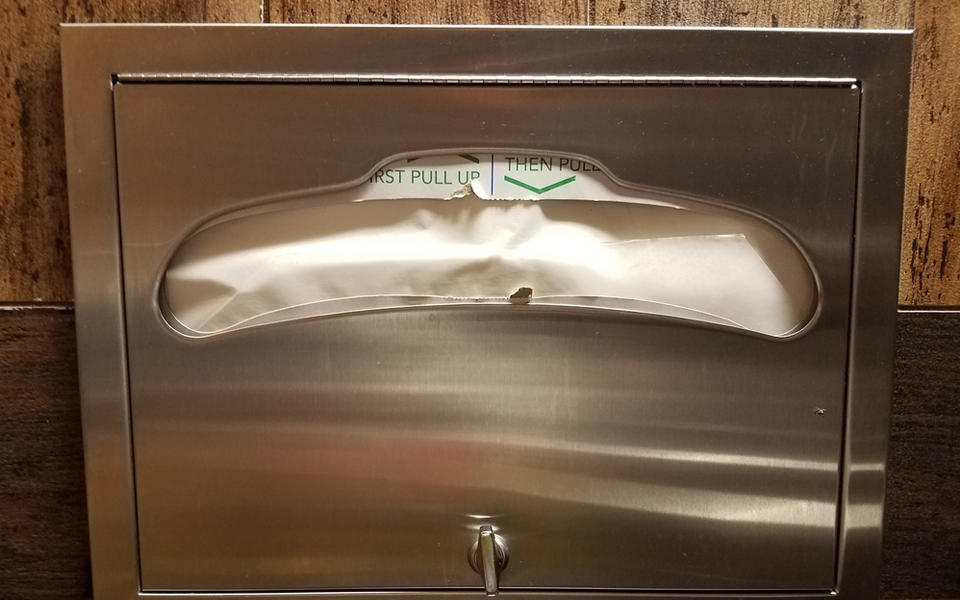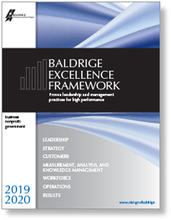Blogrige
The Official Baldrige Blog

As a chemist by training, with some involvement in microbiology as part of a clinical laboratory standards committee early in my career, I have wondered from time-to-time about the efficacy of toilet seat covers in preventing transmission of viruses and bacteria. And should that flap go in the back or front of the toilet? And what about those helpful customer instructions that say, "Pull up, pull down?" We all know from experience that these instructions either yield a piece of a seat cover or a whole bunch of covers.
Hopefully I have raised your curiosity about the answer to these questions and about what this all has to do with the Baldrige Excellence Framework and criteria and organizational performance; at least curious enough to read on. First, let me answer the questions you probably are now wondering about because I posed them in the first paragraph. I did some research and the advice is unanimous (see summaries in USA Today and Time). The flap should go in front, for ease of flushing the seat cover. However, more importantly, the pores in the paper seat cover are larger than the size of bacteria or viruses, so they do not provide protection from viruses or microorganisms. And furthermore, the average cell phone has ten times more bacteria than the average toilet seat.
The real health risk in using a public toilet comes from aerosols that can contact your hands when the toilet is flushed. The best infection prevention here, as in most germ-exposing situations, is washing your hands well. So, maybe those customer instructions should read, "Pull up, pull down, or even better just wash your hands well after using the toilet." Of course, that might lead to a drop in sales for the manufacturer of the seat covers.
So, what does this all have to do with organizational performance? I think this simple example clearly illustrates the benefits and challenges of customer focus, risk management, and a systems perspective. Let me explain.
Customer Focus
In Item 3.1, the Baldrige Criteria have multiple questions about your product offerings. The criteria ask about market need for your product offerings, meeting customer requirements, and exceeding your customers' expectations. The need for the covers might be mainly psychological security; my expectations would be exceeded by a dispenser that gave me one intact seat cover. Or better yet, a product with hand sanitizer mounted next to the toilet seat cover dispenser. How does your organization consider customer expectations and market needs for your products?
In item 3.2, the Baldrige Criteria ask about customer communication, and how you determine customer satisfaction and dissatisfaction. The criteria also ask about customer complaint management and resolution. Is your organization's communication with your customers better than, "Pull up, pull down?" Knowing that a big complaint is probably the inability to get one intact seat cover, would your organization do something about it to improve customer satisfaction and offer a better product than your competitors, possibly leading to long-term customer preference and loyalty?
Risk Management
Virtually everything we do as individuals and as organizations carries some level of risk. Using those toilet seat covers does not address the major source of risk. Do you manage the risk by thorough hand washing?
We used to talk about risk avoidance, but in recent years we have learned (and the Baldrige criteria have emphasized) the need to understand risk, determine the appropriate level of risk for you, and then manage it to the best of your ability. In category 2, Strategy, the Baldrige Criteria note that developing strategy should consider your organization's level of acceptable risk, and that in pursuing innovation you need to determine intelligent risks to pursue. In item 6.2, as part of operations you are asked about business continuity and how your operations are designed to deal with your organization's acceptable levels of risk when preparing for disasters and emergencies.
A growing area of organizational risk stems from cybersecurity. This area has become so important that the Baldrige Program has created a Baldrige Cybersecurity Excellence Builder to enable organizations to better understand the effectiveness of their cybersecurity risk management efforts. Key work processes include identify, protect, detect, respond and recover. Your organization's governance system is expected to consider and sanction appropriate levels of risk, recognizing that risk-free is not possible. As in the Baldrige Excellence Framework, strategy and operations need to build on the organization's level of acceptable risk.
Systems Perspective
How About Your Organization?
Are your "toilet seat covers" truly meeting a customer need? Are they easy to use? Are they differentiated from competitors' offerings and building customer loyalty?
Are you identifying and managing the risk associated with production and use of your products? Are you thinking about the risk strategically? Are your leaders and governance system determining the appropriate level of risk and intelligent risks for your organization?
Are you focused on the right solutions for your intended mission? Are you thinking with a systems perspective?
Ask some of these questions in your organizational discussions. It could lead to more careful strategic thinking!

Baldrige Excellence Framework
The Baldrige Excellence Framework has empowered organizations to accomplish their missions, improve results, and become more competitive. It includes the Criteria for Performance Excellence, core values and concepts, and guidelines for evaluating your processes and results.
Purchase your copy today!
Available versions: Business/Nonprofit, Education, and Health Care
About the author
Related Posts
Comments
Dr. Hertz - Your creativity is without equal! Great job capturing the readers attention and desire to read on.






What a fantastic article, Harry! Funny and insightful... and, as always, highly relevant. Thank you!